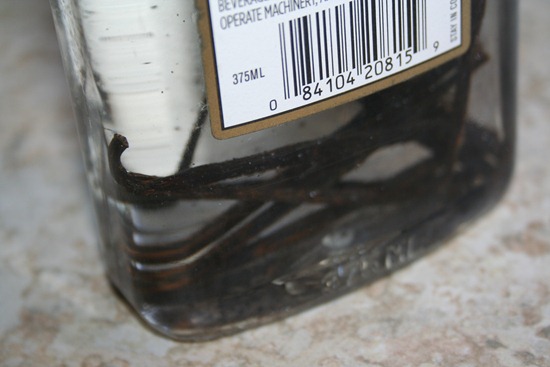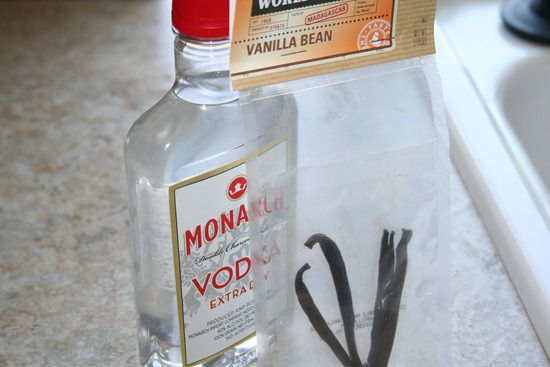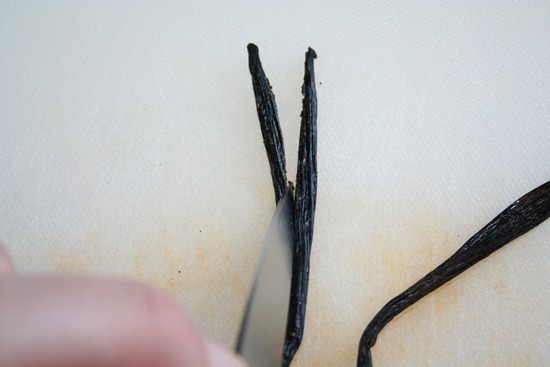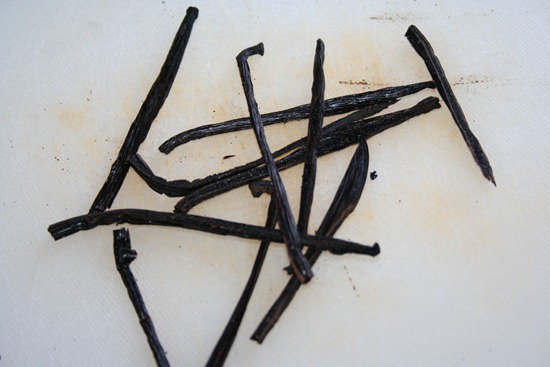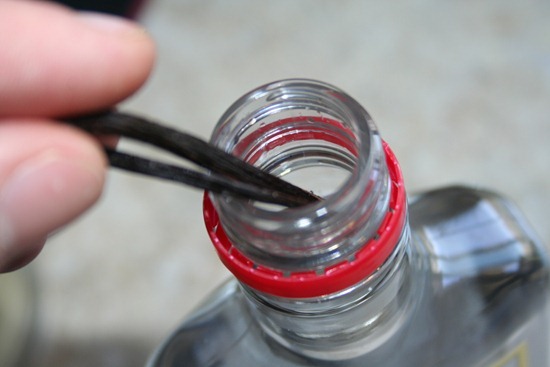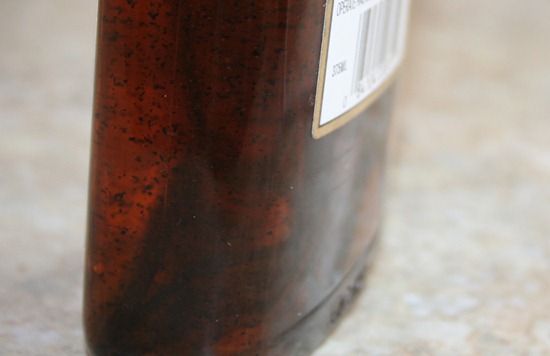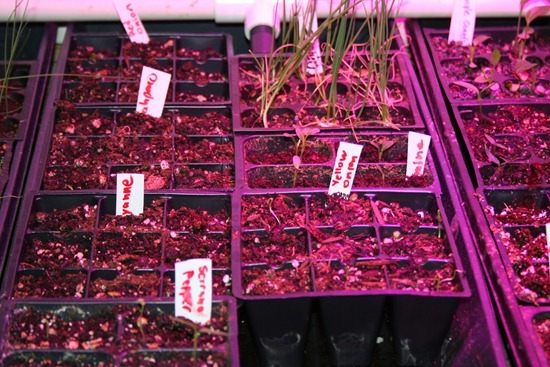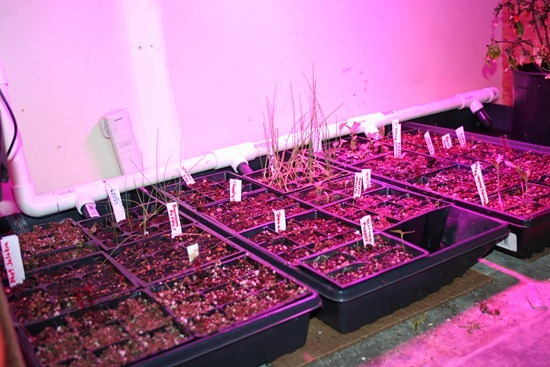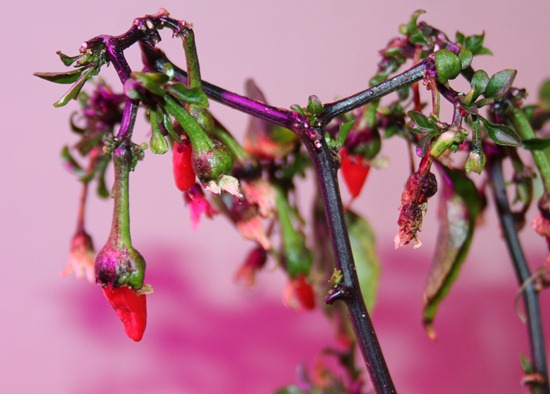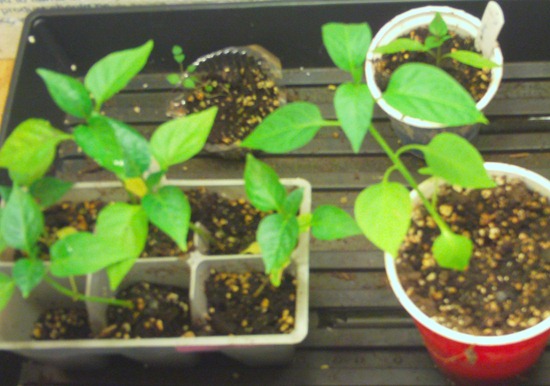How to make your own vanilla extract
13.1 years ago cheap, storing, vanilla, vodka
Every time I buy vanilla I always have to stare at the bottles for a few minute contemplating if I should pay the extra cost for “Pure Vanilla” versus the imitation stuff. Provided the real stuff costs 15 times more than the fake stuff when I walk away with my little eye dropper worth of pure vanilla extract for the small fee of $7.99. Just for the record that equates to $638.72 per gallon, which makes gasoline look pretty cheap.
The last time I made this purchase I decided this is the last time I would be buying vanilla and in the future I would simply make my own. After looking into the process I was blown away by how simple it was. Take some vanilla beans seep them in some alcohol and wait until it looks like vanilla. There are many advantages to making your own vanilla first of which is cost. For the same $7.99 I purchased 2 ounces of vanilla for I can make 12.68 ounces of my own. Another great benefit is as soon as you start looking for vanilla beans online you will see there are many different types to choose from creating your own special blends using beans from different areas as well as a variety of alcohol to infuse it in.
Many recipes I came across describe how to make super high concentration versions that require to to reduce your usage by quarter or half. I decided to attempt to make some single strength vanilla so mine should be similar to that purchased in the stores. I confirmed that commercial vanilla extract has 13.35 oz. of vanilla beans per gallon of alcohol. Provided I am using 375 ml of alcohol in my batch I would need 1.33 ounces of vanilla beans which equates to approximately 2.5 vanilla beans, which I picked up for $2.99 for 3 pods. Next was alcohol choice, for this you want something about 70 proof (35% alcohol) some obvious choice in this range are vodka, rum, or bourbon. With a desire to keep costs low and a desire to be able to see how the liquid’s color changed I went with the second cheapest 375 ml bottle of vodka I could find (I splurged and spent the extra 50 cents).
Step 1: As mentioned above the process is very easy, you start by splitting the vanilla beans lengthwise.
Step 2: Take the split beans and cut them to one inch lengths.
Step 3: Insert cut beans into bottle of vodka
Step 4: Shake bottle (when you think about it)
Within a few days your alcohol will begin to get dark and have a nice vanilla smell, but keep holding out for the good stuff.
After about a month your vanilla should be fully infused and have some vanilla with approximately the same strength as the expensive stuff you buy in the store at a fraction of the cost.
Now at this point you have a couple options:
Option #1: Screen out the vanilla beans (and fragments) and if beans (after dried)are still fragment place them into a sealed container with a few cups of sugar to make your own vanilla sugar.
Option #2: Let the vanilla to continue to infuse and have progressively stronger vanilla. For super flavor shake before using to get some of the bean fragments into your measurement.
Option #3: Top off the bottle with alcohol after use to have a nearly endless supply of vanilla. Eventually you will need to add a couple more beans.
Since alcohol is naturally a great preservative, if you keep your vanilla out of light (or in a dark glass container) it should be good for about 5-6 years without losing too much flavor.
Seedlings thriving in the grow box
13.1 years ago indoor growbox, indoor seed starting, onions, peppers, tomato
I have almost everything planted at least germinating in my grow box. As you may be able to see from the labels I am growing a variety of peppers this year as well as a few different onions and tomatoes. I also have garlic and some onions I overwintered already outside and peas already in the ground.
I did successfully grow some peppers in the grow box over the winter, though as you can see below their size was lacking and the plant has been perking up a bit with some new growth once I added some better controlled heating and the LED lights.
Tags: grow lights, growbox
When to bring your vegetables outside?
13.1 years ago garlic bulbs, onions, peppers, seeds, spinach, summer, tomato
Every time I have a discussion with a beginner gardener, this is the most common question. Typically the answer involves figuring out your last frost date then doing some backwards math when to start your seeds or purchase your plants from your local nursery. The problem with this is there is an assumption of the rate at which temperatures will increase after this no frost date. It doesn’t really matter how many weeks after the last frost when you bring out your tomatoes but the fact that it is over 65° F
This is good for estimation but ultimately it comes down to what temperatures various vegetables can survive and thrive at. This is ultimately when you should decide to start bringing those fragile plants outside. For reference the table below shows these temperatures for various vegetables.
| Vegetables | Thriving Temp Range |
Surviving Temp Range |
| Hot Vegetables eggplants, sweet potatoes, peppers, watermelons, okra, tomatoes |
70° F – 85° F 21° C – 30° C |
65° F – 90° F 18° C – 32° C |
| Warm Vegetables beans, black-eyed peas, cucumbers, melons, sweet corn, squashes |
65° F – 75° F 18° C – 24° C |
50° F – 90° F 10° C – 32° C |
| Cold/Warm Vegetables artichokes, beets, broccoli, brussel sprouts, cabbages, carrots, cauliflower, celery, chard, collards, endives, fava beans, fennel, kale, kohlrabi, lettuce, parsnips, peas, potatoes, radishes, rutabagas, spinach, turnips |
60° F – 65° F 16° C – 18° C |
40° F – 75° F 4° C – 24° C |
| Cold Vegetables garlic, leeks, onions, shallots |
55° F – 75° F 13° C – 24° C |
45° F — 85° F 7° C – 30° C |
Now that you know what temperatures your veggies grow best in, unless you can find a news station with a 2-3 month forecast this doesn’t help you too much. Fortunately we have been saving weather data for some time now and with some simple statistics you can make a more logical prediction of when this may occur (compared to last freeze date)
One site that makes this very easy is WeatherSpark, it uses historical data with great visuals to easily determine when the best probability of picking the right date to plan on your veggies going out into the great unknown.
As you can see in my area we rarely stay in the thriving temperature zone during a 24 hour period which is the reason why I personally keep my tomatoes and peppers in my automated grow box as long as I can.
Hopefully WeatherSpark can give you some incites about predicting the best times to bring those veggies out for a successful crop this year.
Tags: seed, starting seedling
Most profitable fruits to grow in your home garden
13.1 years ago blackberries, peach, raspberries, strawberries, summer
I previously did some analysis on the profitability of vegetables in your garden and there have been requests as well as my own curiosity of how fruits would stack up against fruit trees/bushes.
To keep things simple I made the assumption of fruit trees/bushes are fully mature with maximum yields. So please take into account that you will see some variance throughout the years. I have also used the fair market retail value of fruit when purchased by the pound, obviously all of these could be purchased cheaper by the bushel…but many of us you live in urban areas it can be difficult to make these discounted large purchases nor consume 48 lbs. of apples before they go bad.
After a crunched the numbers I was a bit surprised and happy to see blueberries at the top of the list. I have four blueberry plants already in the ground and two more waiting to be planted. Though one asterisk for this plant is that is take 3-4 years to really start producing but you get several years of good production and by buying a variety of plants with different harvest times, so unlike many other fruits you do not get a huge supply of fruit all at the same time.
Overall fruit compared to vegetables provides a similar range of harvest value depending on the variety. There are a couple of differences that should be taken in to consideration:
- Space: Fruit trees/plants range from a little over a square foot to over 60 square feet per planting
- Time to Maturity: It can take several years for some trees to become mature and start producing high yields.
- Size of Harvest: You could see hundreds of lbs. of produce within a couple weeks. You will need to determine a means to actually use this (canning, pies, forcing on neighbors)
- Commitment: Unlike annual vegetables if you decide you really don’t care for the produce it can be time intensive and expensive to switch out an apple tree for a difference variety.
| Fruit | Harvest Value/ Square Foot |
| Blueberries | $ 18.71 |
| Pomegranate | $ 13.38 |
| Nectarine | $ 8.64 |
| Strawberries | $ 8.13 |
| Peach | $ 7.90 |
| Apple (Standard) | $ 6.64 |
| Apple (Semi-Dwarf) | $ 6.40 |
| Raspberries | $ 6.23 |
| Apricot | $ 3.54 |
| Plum | $ 3.18 |
| Blackberries | $ 3.05 |
| Pear (Standard) | $ 2.90 |
| Fig | $ 2.66 |
| Almond | $ 2.56 |
| Apple (Dwarf) | $ 2.35 |
| Walnut | $ 2.28 |
| Pear (Dwarf) | $ 2.10 |
| Cherry (Sour) | $ 1.13 |
| Cherry (Sweet) | $ 0.84 |
As always the common sense principles apply:
- Grow what you like to eat
- Cost is only one factor to consider, you can’t beat real fresh produce
